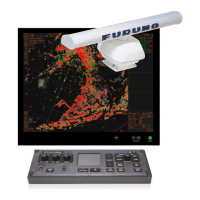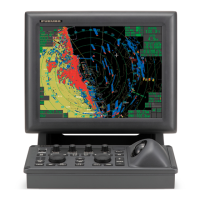How to fix Furuno FAR-1518 Marine Radar showing only two PI lines?
- AAndrew HuangSep 23, 2025
If your Furuno Marine Radar is only showing two PI lines when six are desired, it is likely due to an incorrect setting of the PI line interval or an inappropriate setting for the number of PI lines to display. Adjust the PI line interval. Also, check the menu setting for the number of PI lines.







